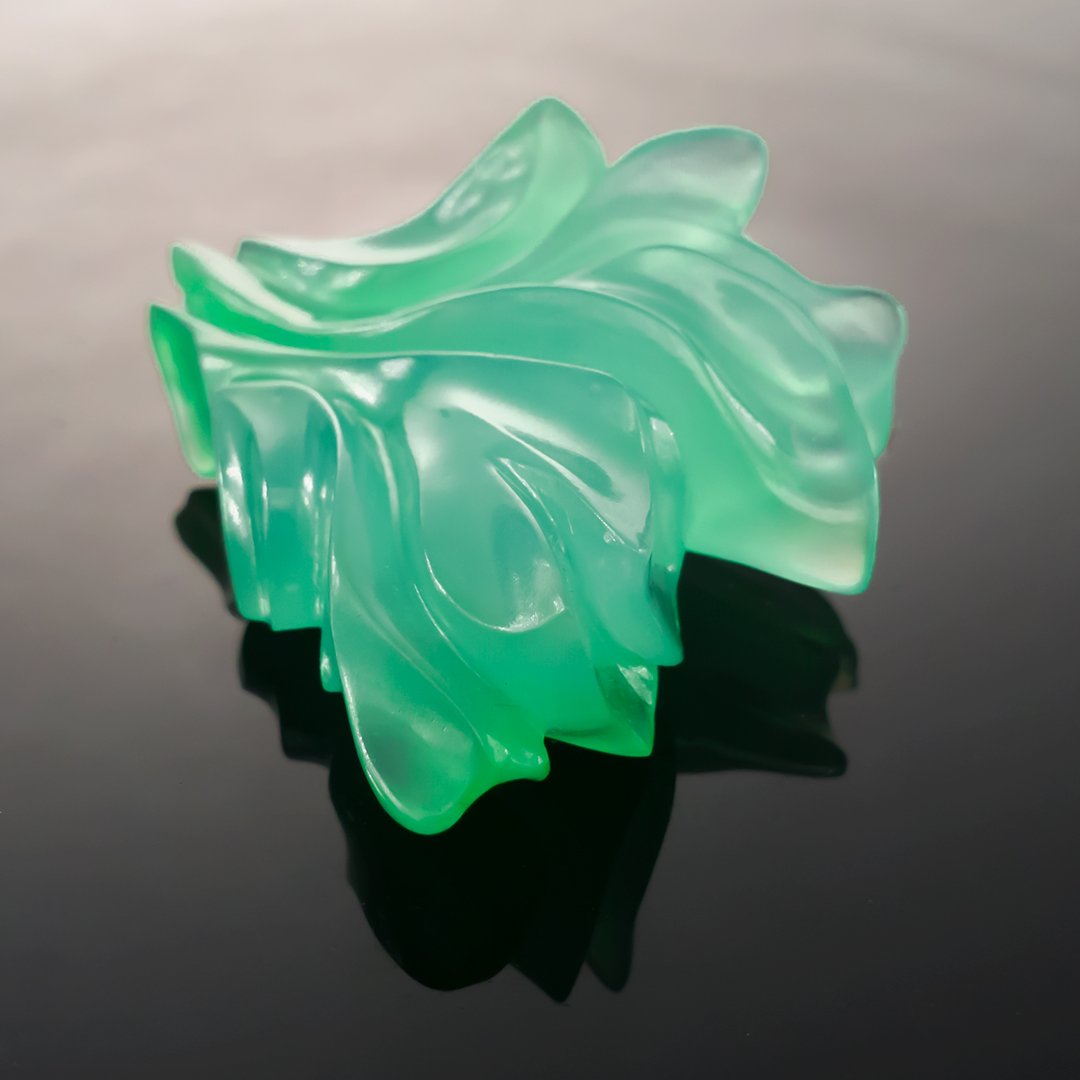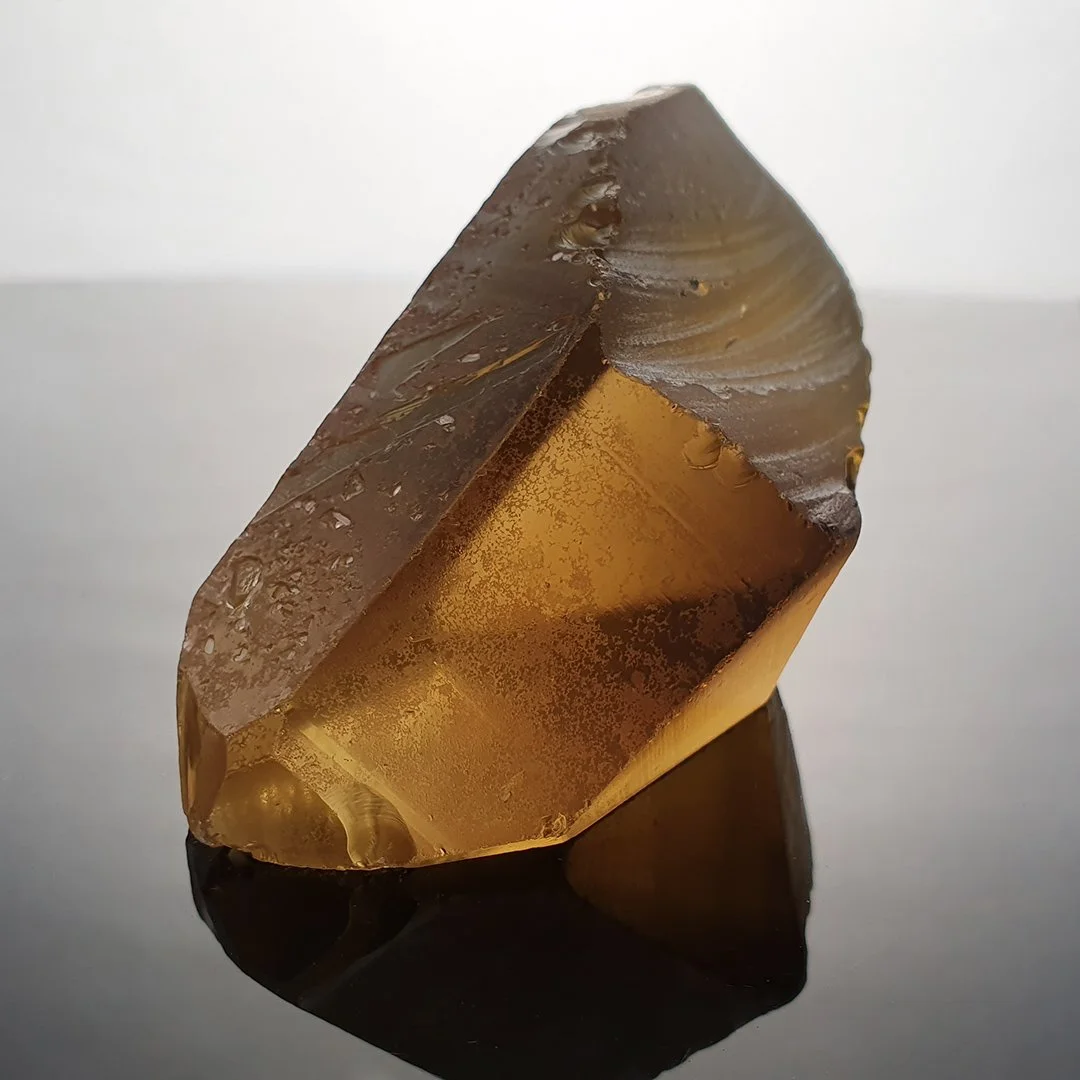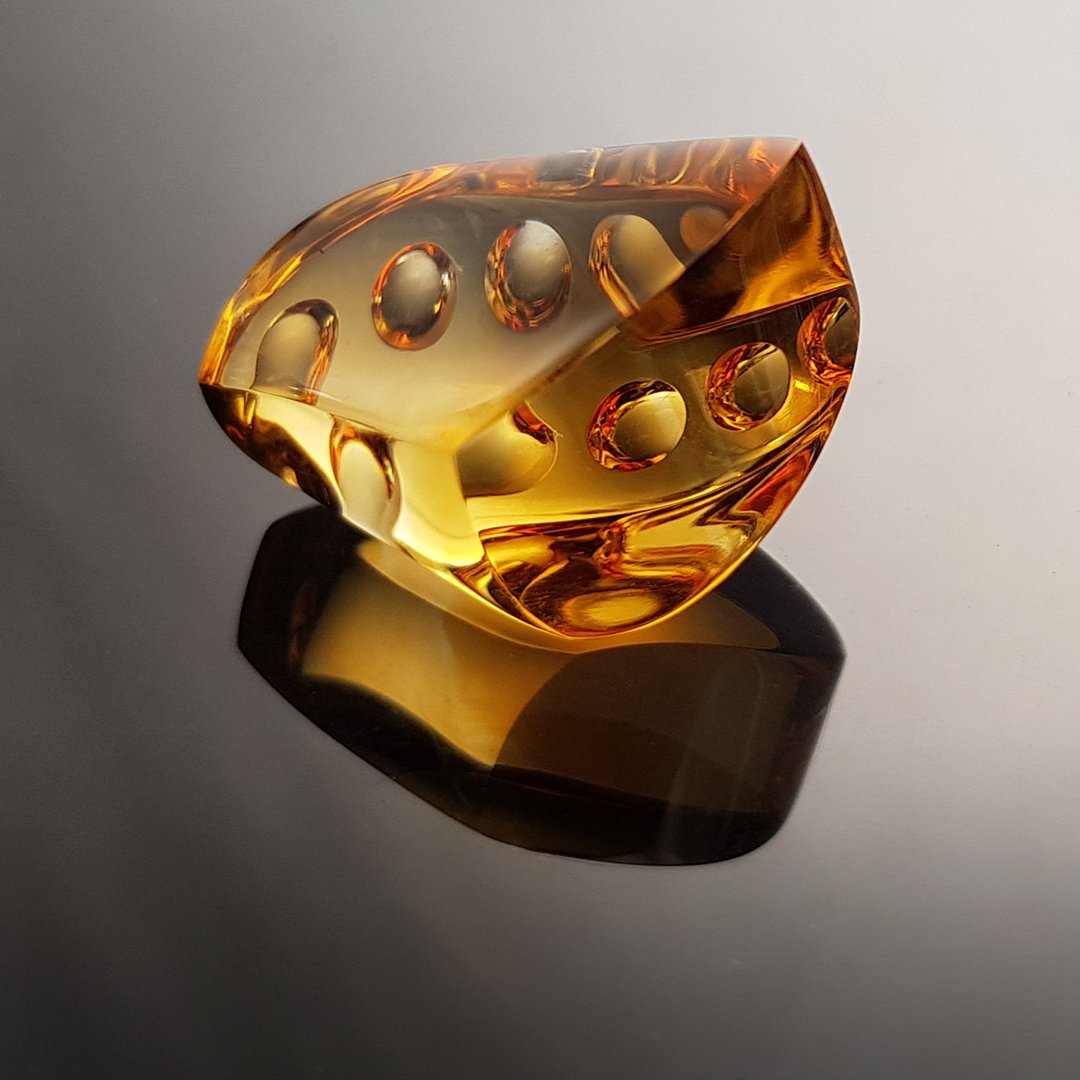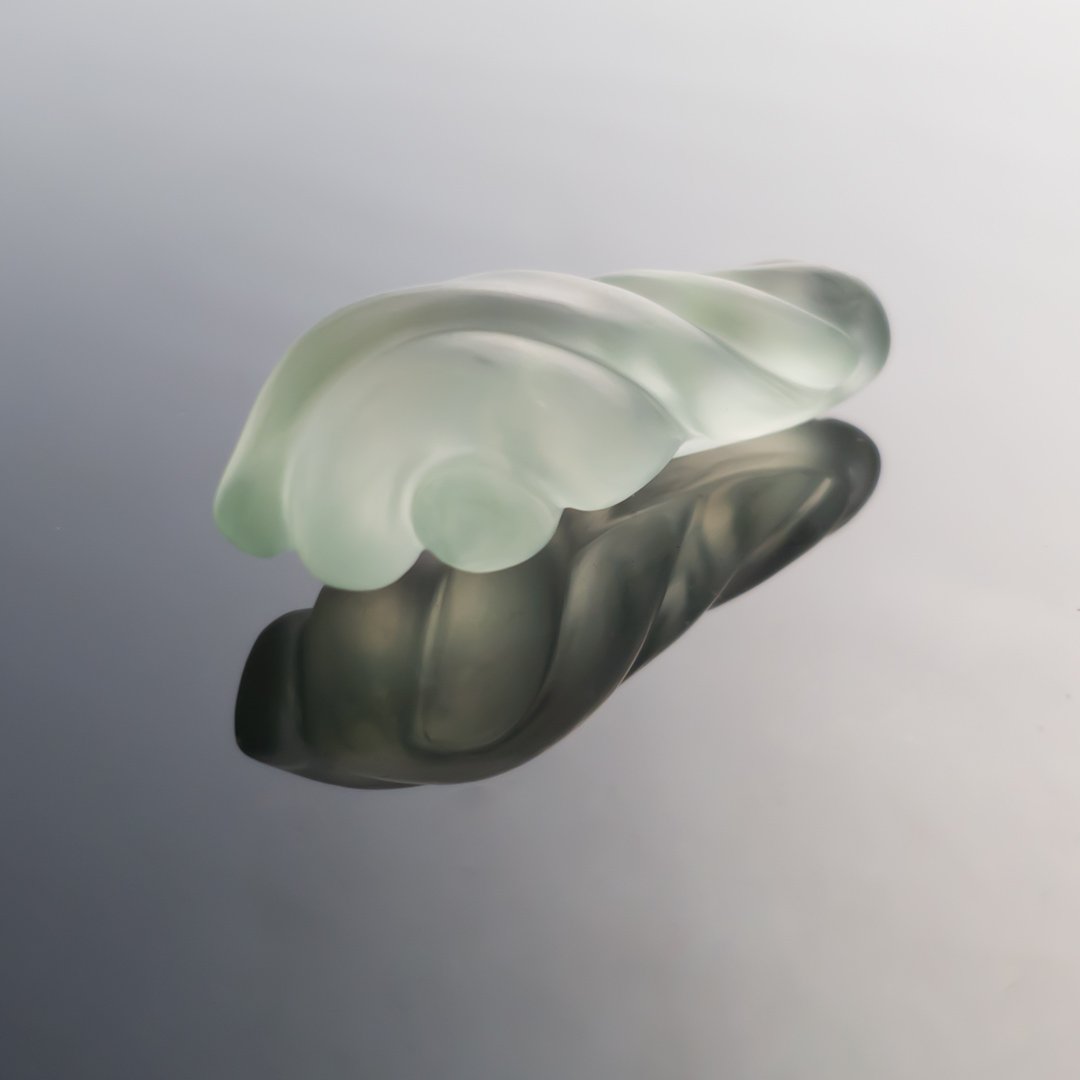BESPOKE GEMS
discover the art of the gemcutter
Curvatures
Sinuous curves create evocative forms where light and colour come together to move and captivate in ways that are truly beautiful and mesmerising to behold. There is beauty in their reflections and how the light travels across and beneath their surfaces. Embracing soft lines and a gentle feel, they are an embodiment of the Yin essence.
Each piece in my Curvature collection is a hand carved miniature sculpture. They are unique and never to be repeated.
Even before I begin shaping a stone I must first have found it. Finding special pieces of rough raw stone that are suitable is a challenge and often seeking out these natural wonders can be a journey in it’s own right. One doesn’t just snap their fingers and the right stone appears. Many are the times I have only found one or two stones out of hundreds that have just the right combination of colours, shape, structural soundness and possibility. These pieces are the diametric opposite of today’s seemingly endless tsunami of fast-paced mass-produced items.
I carefully assess each raw stone noting its particular characteristics, shape and inherent beauty, looking for that way in. This is a gentle time, of getting to know a stone and its spirit. Some stones I will know very quickly what to do, with others it can take years. Perhaps this sounds unusual but then maybe it is. To me, these stones are ancient things and worthy of great respect.
They are colour incarnate and an embodiment of the mysterious creative processes of our Mother Earth that brought them into being. In their own ways, they provide an opportunity to see a reflection of ourselves and how we choose to move through the world and what we decide to spend our short time upon. Each stone has existed long before we came along and if allowed to be, will continue to exist long after we are gone. It is we who are passing through their lives.
Once I am sure of the approach I want to take I begin the shaping. I grind off and smooth out the rough jagged material, remove the flaws, feel the flow and gradually allow the stone to reveal itself. It is a slow and steady process and often I start off with one objective in mind only to find myself changing course midway through when I suddenly see something that I hadn’t before - a feature or internal reflection, the way colour pools in a particular part of the stone or notice an unexpected profile beginning to appear.
This is a time of discovery and surprise.
Eventually the shaping and smoothing is finished and the form is revealed. Now come the long and exacting steps of polishing the stone to complete its progression towards becoming a gem. Depending on each piece I will decide whether to apply a frosted satin finish or take it all the way through to a fully, highly polished one.
Polishing one of these miniature sculptures involves painstakingly stepping through what I call the grits. Various grades of diamond particles from course 360 grit up to very very fine 14,000 grit or even 100,000 grit in some cases. Normally there are five or six steps and every scratch, groove and mark from the preceding step has to be removed before progressing onto the next. This has the effect of gradually making the surface smoother and ever more polished.
This can be hand-cramping, eye-straining work but there are no shortcuts and it demands focused concentration and consistent attention to detail. Working with gemstones through cutting, carving and sculpting them is a subtractive art - once you remove something you can’t put it back on or go back and make a different decision. It’s a one-way street so slow, steady and sure is the way.
But hopefully at the end of the day, when you’ve finally finished, the result is something that is beautiful, pleasing to the eyes and senses, and most importantly pays respect to the stone.











